Balance Sheet
The balance sheet is one of the 3 major financial statements.
It shows company’s:
▪️Assets: What it owns
▪️Liabilities: What it owes
▪️Shareholders Equity: It's net worth attributable to its owners
At a fixed point in time.
That “at a point in time” part is key!.
A balance sheet is a SNAPSHOT of a company’s net worth.
It is usually measured at the end of a quarter/year.
That’s different from an income statement or cash flow statement, both of which are measured over periods of time
All balance sheets follow the same formula:
Assets = Liabilities + Shareholders Equity
This formula must be in balance at all times
(Hence the term “balance sheet”).
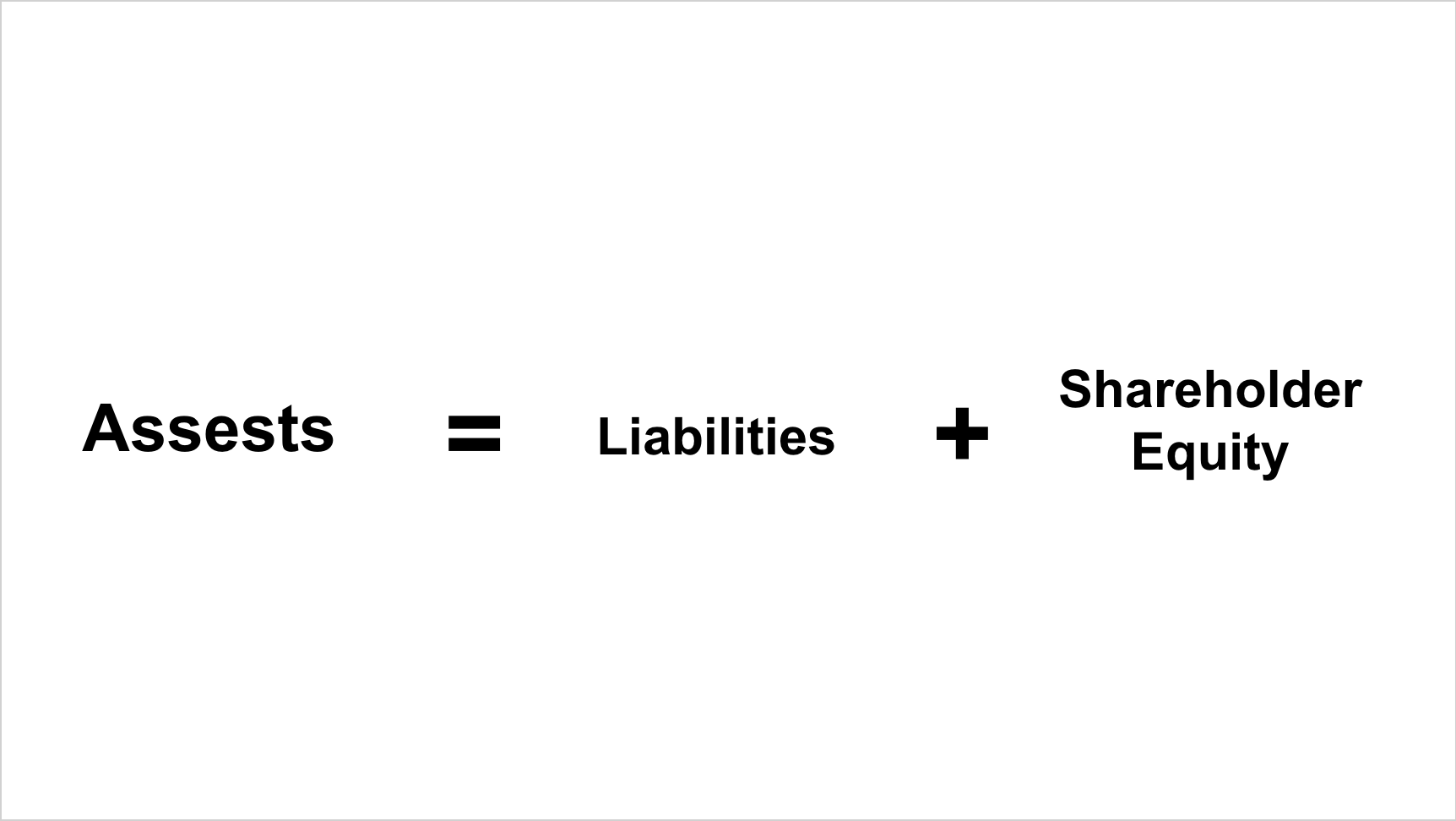 Side Note:
This formula can be easily re-arranged into the “net worth” formula that you are already familiar with
Side Note:
This formula can be easily re-arranged into the “net worth” formula that you are already familiar with
Assets - Liabilities = Shareholders Equity (Net worth)
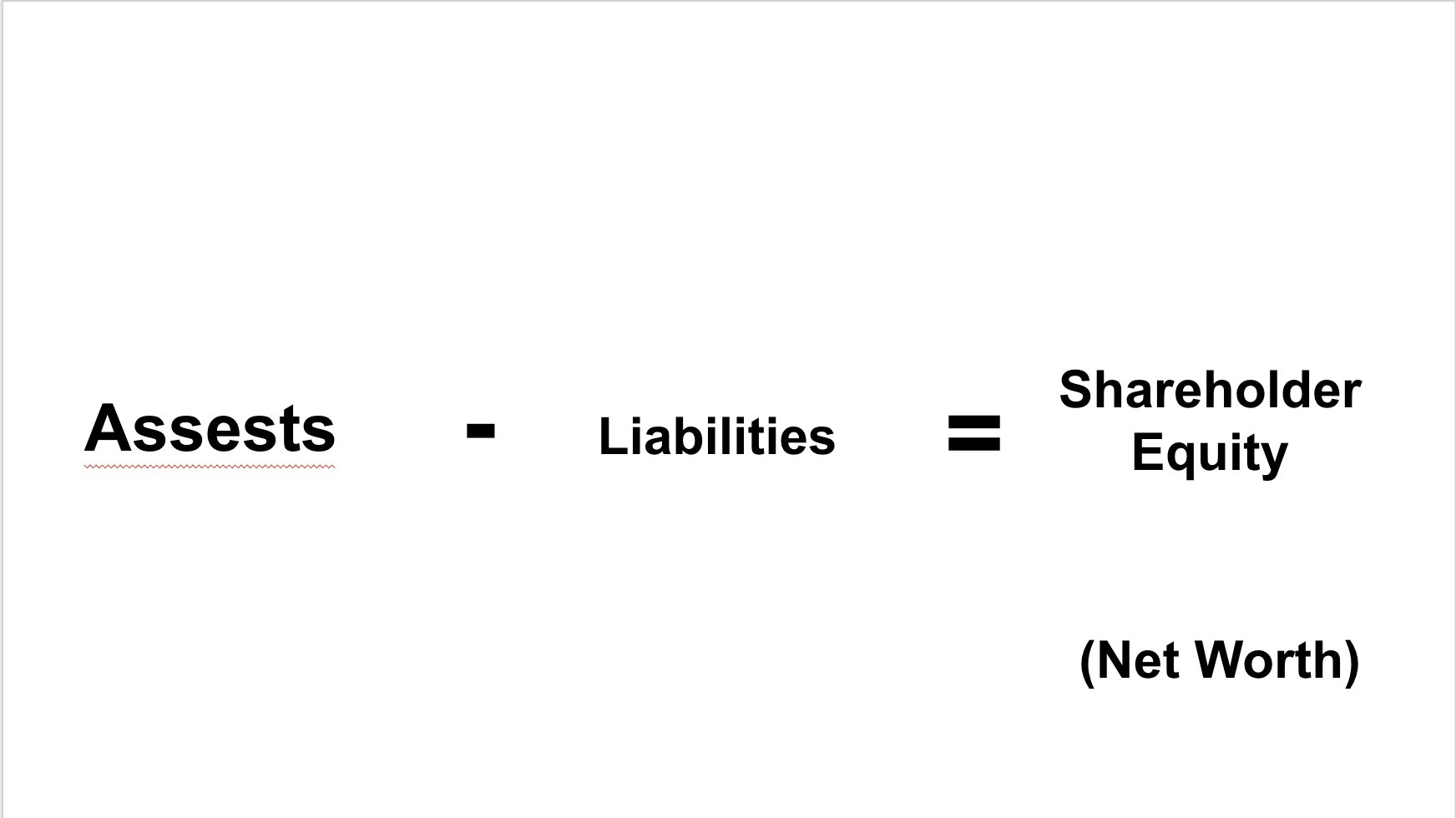 Companies are differed a way in how they categorize each item on their balance sheet
Companies are differed a way in how they categorize each item on their balance sheet
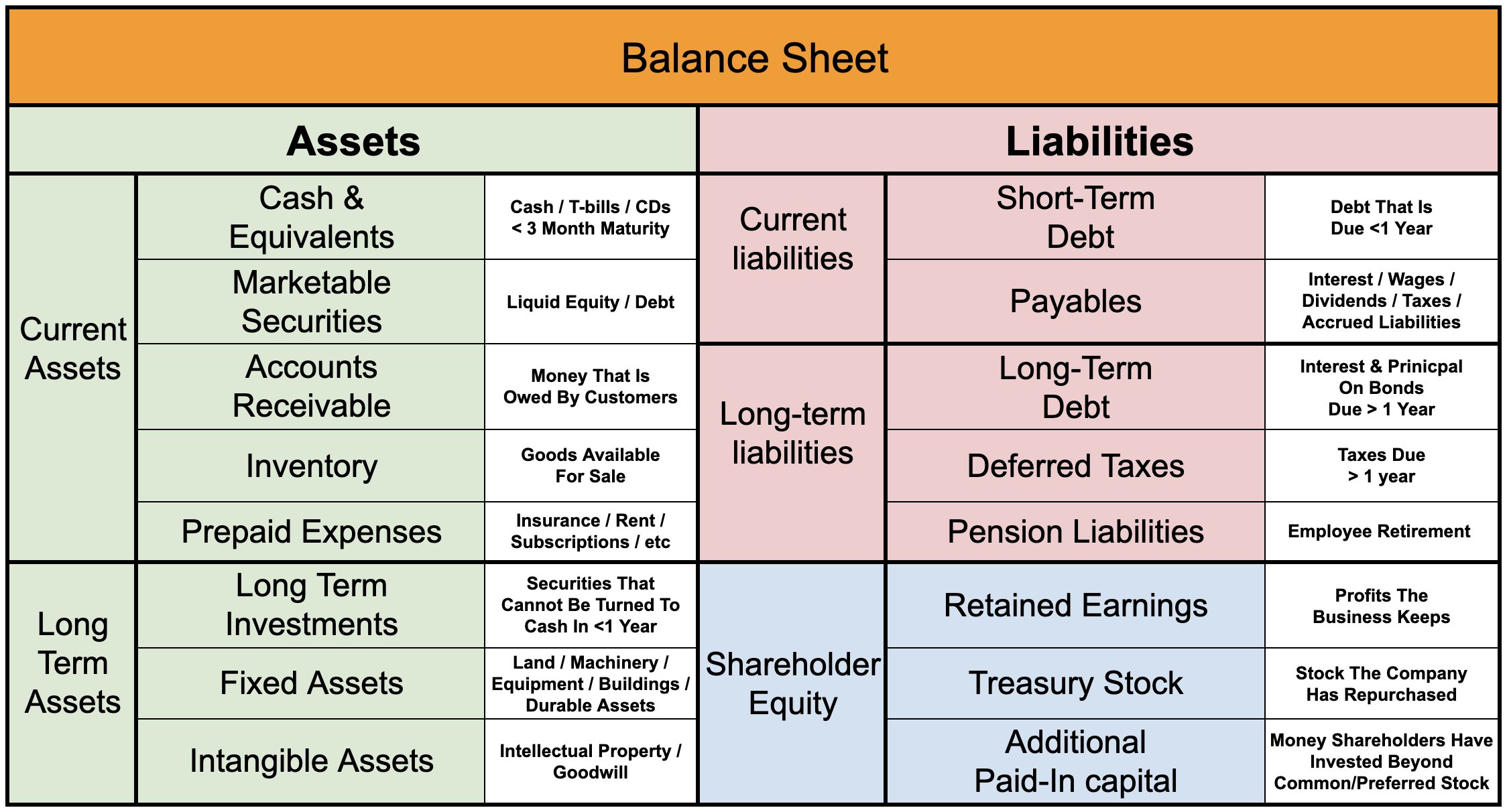 This graphic above shows some of the most commonly used categories & terms.
Let’s start with assets, which is what a company OWNS.
Assets are listed in order of liquidity
This graphic above shows some of the most commonly used categories & terms.
Let’s start with assets, which is what a company OWNS.
Assets are listed in order of liquidity
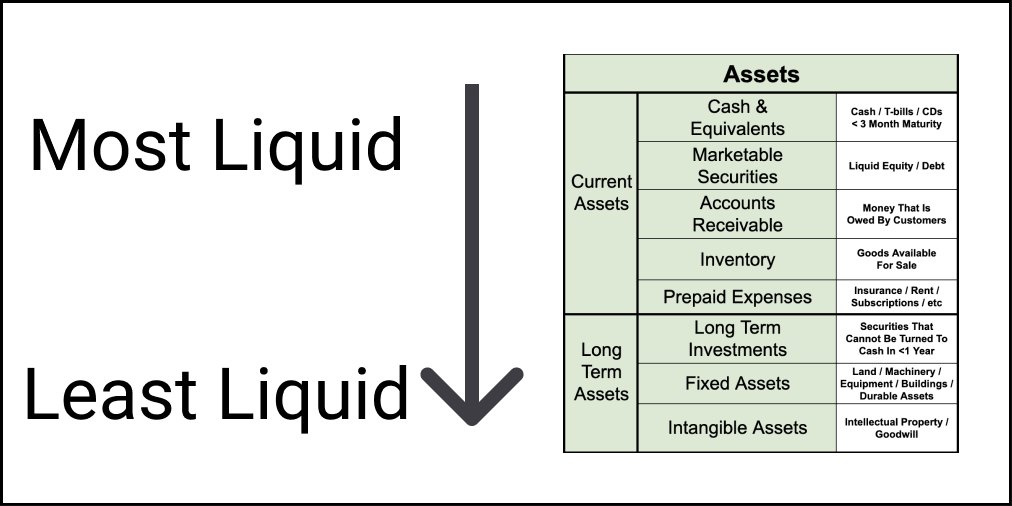 (Liquidity means how quickly a security can be turned into cash)
In above graphic,the most liquid assets are at the top, the least liquid on the bottom.
(Liquidity means how quickly a security can be turned into cash)
In above graphic,the most liquid assets are at the top, the least liquid on the bottom.
There are two categories of assets:
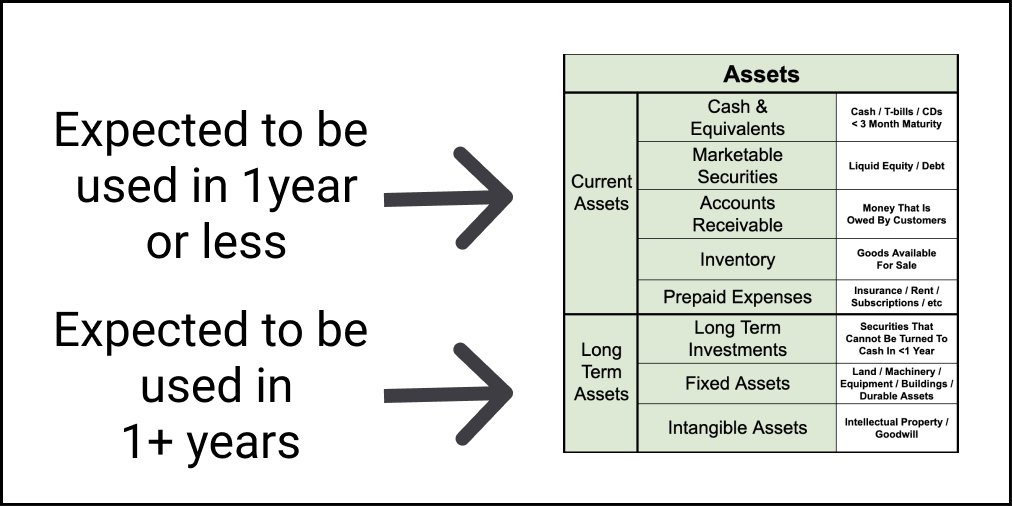 Current assets:
Assets that are expected to be used in < 1 year
Current assets:
Assets that are expected to be used in < 1 year
Long-term assets:
Assets that a company will benefit from for >1 year
Common current assets:
▪️Cash: Checking account, t-bills, CDs w/ < 3 maturity
▪️Marketable Securities: Stocks, bonds...etc that can easily become cash
▪️Accounts Receivable: Money it is owed by its customers
▪️Inventory: Unsold goods
▪️Prepaid expenses: Insurance, rent, etc…
Long-term assets come in 2 forms:
1: Tangible Assets
▪️Buildings
▪️Equipment
▪️Property
▪️Stores
2: Intangible Assets
▪️Trademarks
▪️Goodwill (premiums paid to make an acquisition)
▪️Patents
▪️Stocks/Bonds held >1 Year
Now for Liabilities, which are what a company OWES .
There are 2 categories of liabilities:
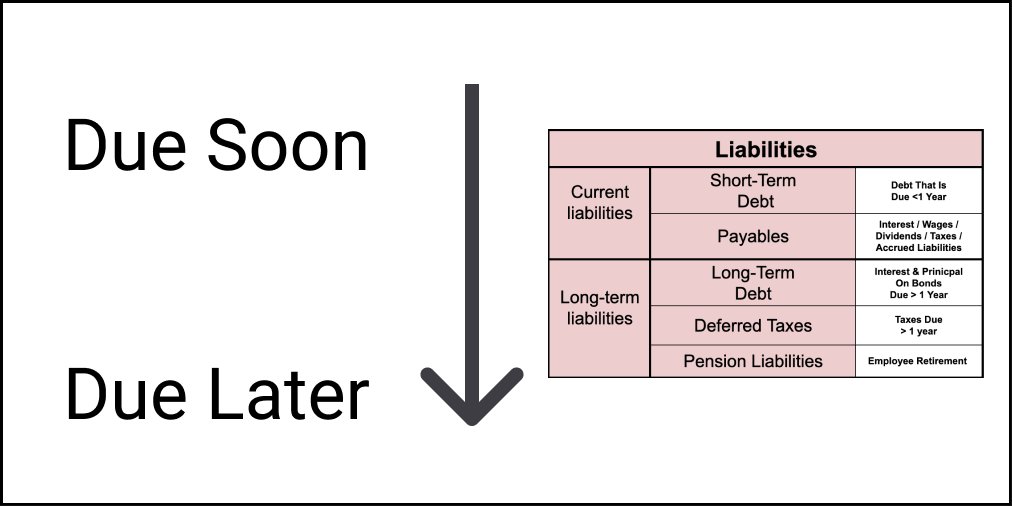
1: Current liabilities:
▪️Bills that will be paid in < 1 year
2: Long-term liabilities:
▪️Bills that are due in >1 year
Common current liabilities (due < 1 year):
▪️Short-term debt
▪️Accounts payable (money owed to suppliers)
▪️Interest
▪️Unpaid Wages
▪️Dividends
▪️Taxes
Common long-term liabilities (due >1 year):
▪️Long-term debt (also called "Notes")
▪️Customer pre-payment
▪️Taxes
▪️Pension
Finally, is shareholders equity
This is money attributable to the business owners (shareholders)
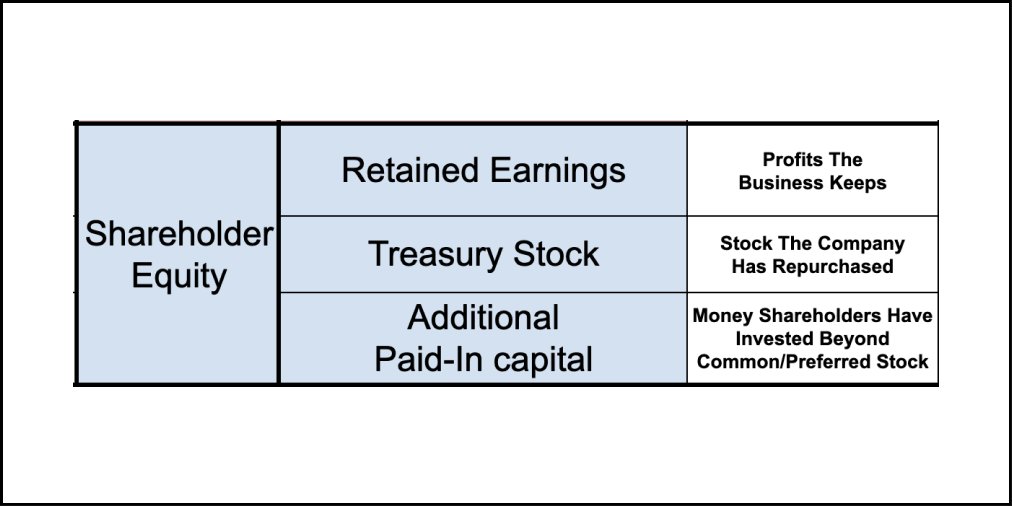
Common categories:
▪️Retained Earnings: Net profits a company reinvests in the business
▪️Treasury Stock: Money used to buy back stock
▪️Additional Paid-In Capital: Amount shareholders have invested beyond common/preferred stock